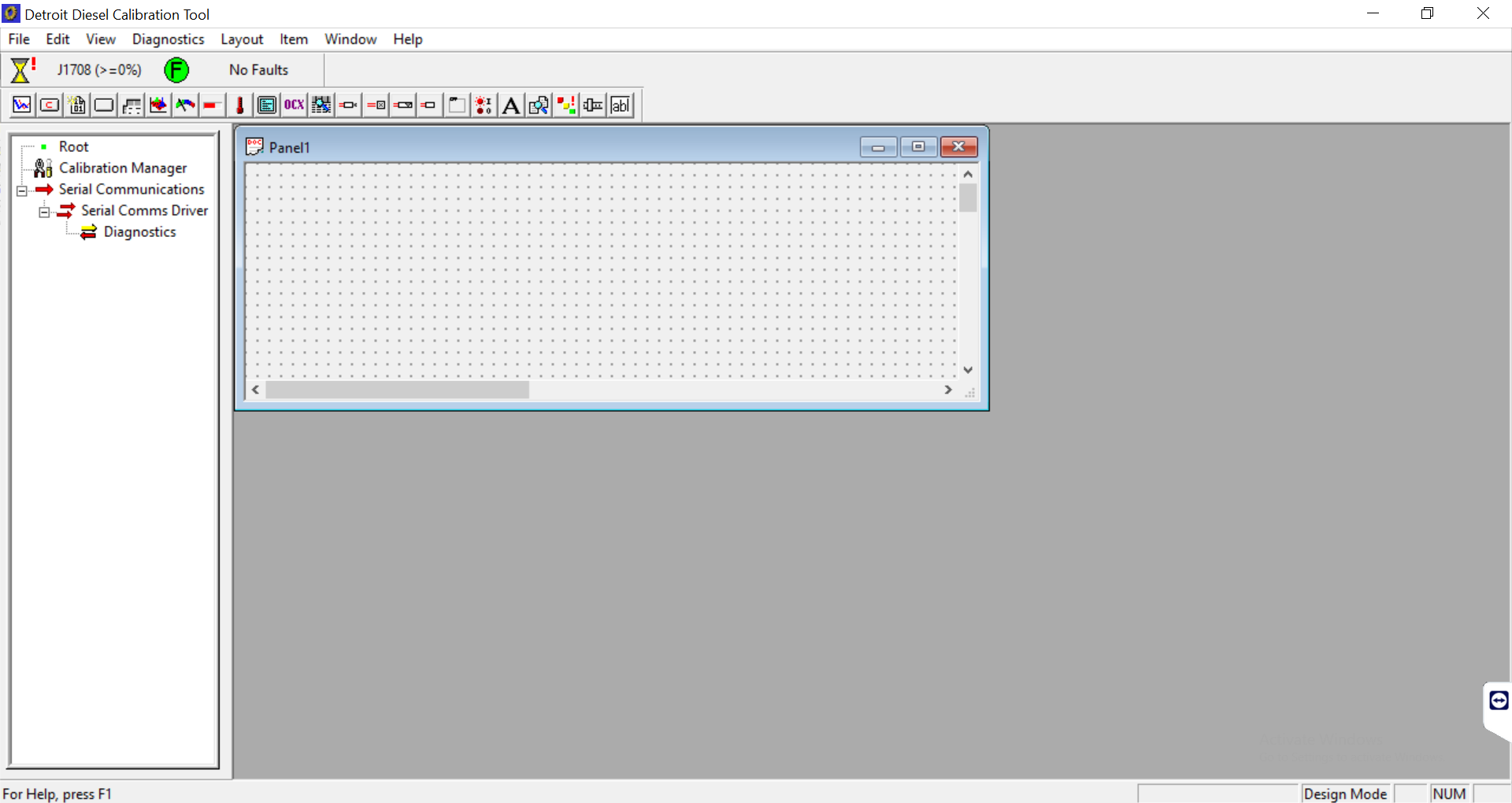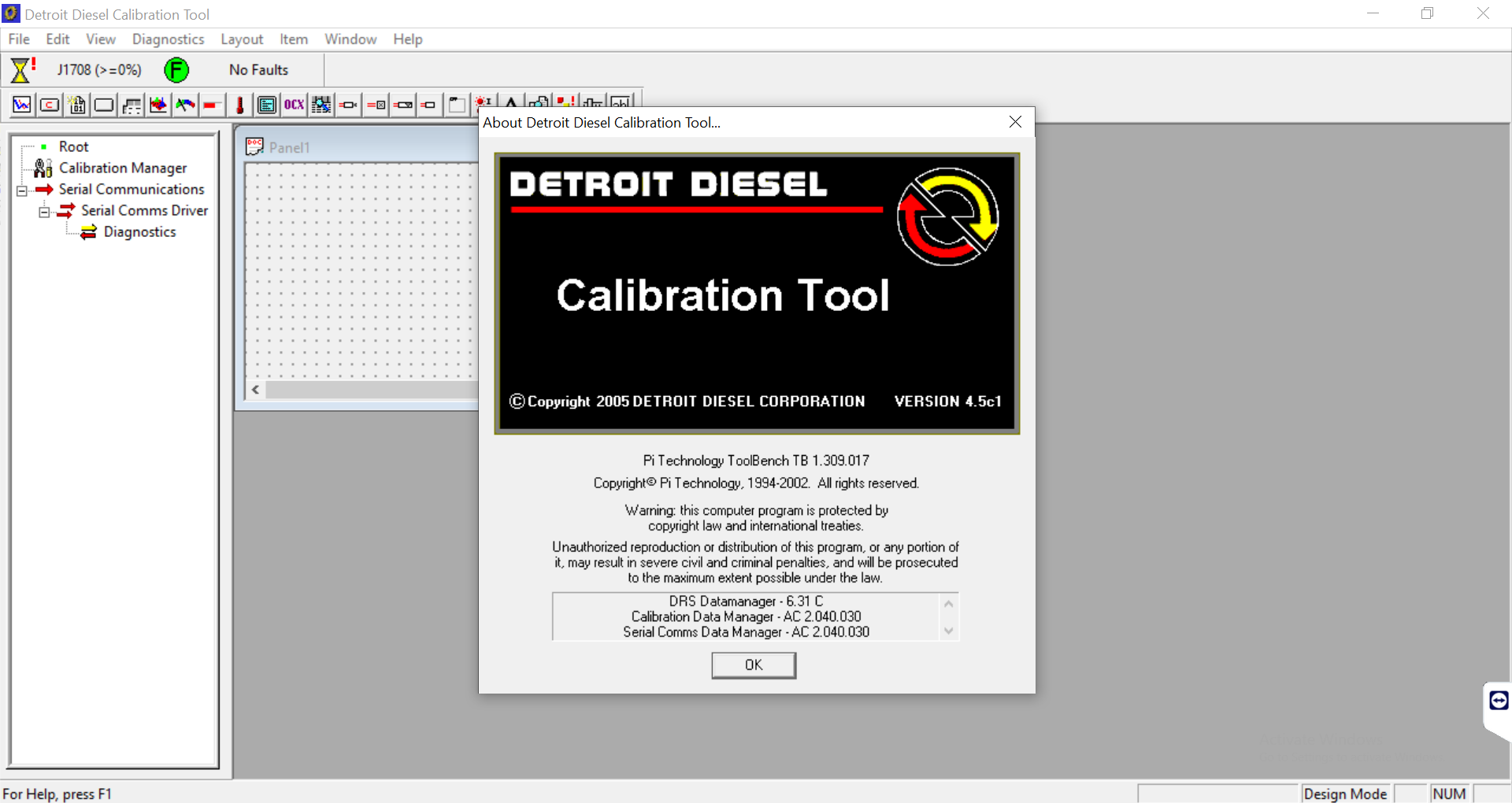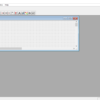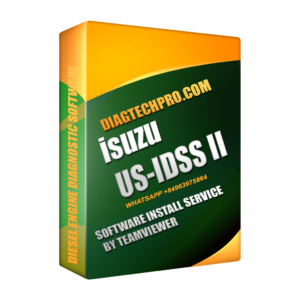Understanding the Detroit Calibration Tool 4.5
126 $ Original price was: 126 $.105 $Current price is: 105 $.
Brand: DETROIT CALIBRATION TOOL
Version: 4.5
File Size: Approximately 73 MB
License Time: 2 year
Software Type: Windows-based ECM programming and monitoring tool
Region: Global
OS Support: Windows 10, Windows 11
Category: All Product
Size Installed:
Database Language: English
Interface Language: English
In this blog post, we will delve deep into the world of automotive calibration, focusing specifically on the Detroit Calibration Tool 4.5. This tool has become instrumental in ensuring vehicles perform at their optimal levels while adhering to strict industry standards. As we explore its features, benefits, implementation, and real-world applications, you will gain a comprehensive understanding of why the Detroit Calibration Tool 4.5 is essential for modern automotive technicians and vehicle fleet managers.
Introduction to the Detroit Calibration Tool 4.5
Calibration tools are increasingly crucial in the automotive industry, allowing technicians to adjust and verify the performance of various vehicle systems. The Detroit Calibration Tool 4.5 stands out as a leading instrument that enhances accuracy and efficiency in vehicle maintenance.
Overview of Calibration Tools in Automotive Industry
Calibration tools are specialized devices used to ensure that automotive systems operate within defined parameters. These tools facilitate adjustments to engine performance, transmission settings, and electronic control units (ECUs).
The automotive landscape has evolved dramatically over the past few decades, with advancements in technology driving the need for precise calibration. As vehicles become more complex, equipped with sophisticated electronics and software, the demand for advanced calibration tools has surged. Calibration tools serve as a bridge between theory and practical application, enabling technicians to diagnose issues accurately and make necessary adjustments.
Importance of Accurate Calibration
Accurate calibration is paramount in the automotive sector, impacting everything from vehicle safety to fuel efficiency. When calibration is performed incorrectly, it can lead to suboptimal vehicle performance, increased emissions, and potential safety hazards.
Moreover, inaccurately calibrated vehicles can incur higher maintenance costs over time, as inefficiencies may lead to premature wear or failure of components. In an industry where regulations concerning environmental impact and safety continue to tighten, the importance of using reliable calibration tools cannot be overstated.
Introduction to Detroit Calibration Tool 4.5
The Detroit Calibration Tool 4.5 represents the cutting edge of calibration technology. Designed by industry experts, it combines user-friendly interface capabilities with advanced diagnostic features. Whether you’re an independent mechanic or part of a large fleet management team, the Detroit Calibration Tool 4.5 offers solutions tailored to your needs.
This tool simplifies complex calibration processes while providing robust performance insights, making it indispensable for anyone involved in vehicle maintenance or repair. From managing data logging to establishing reports for compliance, the Detroit Calibration Tool 4.5 serves as a hub of information and functionality, setting new benchmarks for precision in automotive calibration.
Key Features of the Detroit Calibration Tool 4.5
To truly appreciate the value of the Detroit Calibration Tool 4.5, it’s essential to understand its key features. The combination of user-friendly design, compatibility with various vehicle models, advanced diagnostics, and data logging capabilities makes it a powerful ally for technicians.
User-Friendly Interface
One of the primary advantages of the Detroit Calibration Tool 4.5 is its user-friendly interface. Designed with input from technicians, the layout prioritizes ease of use without sacrificing functionality.
Every feature is intuitively organized, allowing users to navigate through calibration options seamlessly.
Technicians can quickly access various tools needed for specific calibration tasks, streamlining operations and minimizing time spent searching for functions.
This emphasis on usability helps reduce the learning curve for new technicians, allowing them to become proficient in using the tool much faster than older systems that may have had steeper learning curves.
Compatibility with Various Vehicle Models
The flexibility offered by the Detroit Calibration Tool 4.5 is one of its standout features. It supports a broad spectrum of vehicle makes and models, allowing technicians to work across diverse fleets without needing multiple calibration devices.
With continuous updates and expansions to the tool’s database, it ensures compatibility with the latest vehicle technologies.
This adaptability means that whether you’re working on an older model or the newest release, the Detroit Calibration Tool 4.5 can accommodate your needs. Technicians can confidently tackle various jobs, knowing they have a reliable tool at their disposal.
Advanced Diagnostic Capabilities
Advanced diagnostics are critical for identifying and troubleshooting issues within a vehicle’s systems. The Detroit Calibration Tool 4.5 leverages modern technology to provide in-depth diagnostic capabilities that help technicians pinpoint problems with remarkable precision.
By utilizing sophisticated algorithms and real-time data analysis, the tool can offer insight into system malfunctions, helping technicians take corrective actions swiftly.
In addition, the tool allows for simulation tests, enabling technicians to assess how changes in calibration settings affect vehicle systems before finalizing adjustments. This capability not only enhances accuracy but also empowers technicians to refine their approach based on data-driven insights.
Data Logging and Reporting Functionality
Another significant feature of the Detroit Calibration Tool 4.5 is its data logging and reporting functionality. The ability to record detailed data during calibration processes is invaluable for tracking performance metrics and maintaining records for compliance purposes.
Through comprehensive reporting features, technicians can generate reports that outline calibration results, changes made, and recommendations for future service.
This not only helps in maintaining transparency with clients but also serves as a vital reference point for future maintenance activities. Efficient data management fosters better communication among team members and enhances overall accountability in service delivery.
Benefits of Using the Detroit Calibration Tool 4.5
Adopting the Detroit Calibration Tool 4.5 brings numerous benefits to automotive technicians, workshops, and fleet managers alike. Its precision and efficiency translate to tangible improvements in service quality and operational effectiveness.
Enhanced Precision in Calibration
Precision is the cornerstone of effective calibration, and the Detroit Calibration Tool 4.5 excels in this area. With sophisticated algorithms and real-time feedback, technicians can achieve highly accurate calibrations tailored to each vehicle’s unique specifications.
This level of precision minimizes discrepancies that could lead to performance issues down the line.
Moreover, the tool’s ability to conduct simulations enables technicians to test various scenarios before implementing changes, further enhancing the reliability of calibrations. By ensuring that every adjustment is backed by data, the tool aids in achieving optimum vehicle performance consistently.
Time Efficiency for Technicians
Time is of the essence in automotive service, and the Detroit Calibration Tool 4.5 significantly improves the efficiency of calibration processes. With its intuitive interface and streamlined navigation, technicians can complete tasks faster than they would with traditional methods.
The immediate access to diagnostic results and simulation capabilities reduces trial-and-error approaches, allowing technicians to focus on solutions rather than guesswork.
Additionally, the comprehensive reporting feature saves time in documenting processes, facilitating easier communication with customers and colleagues. As a result, workshops can handle a larger volume of work within the same timeframe, ultimately boosting productivity and profitability.
Cost-Effectiveness in Maintenance
Investing in the Detroit Calibration Tool 4.5 proves to be cost-effective in the long run. Accurate calibrations reduce the likelihood of component failures and the associated repair costs, leading to lower maintenance expenses for both shops and vehicle owners.
Furthermore, the tool’s ability to optimize vehicle performance can enhance fuel efficiency, contributing to savings on fuel costs over time.
For fleet managers, the tool’s data logging capabilities allow for better asset management and resource allocation, ultimately reducing overall operating costs.
By leveraging the efficiencies provided by the Detroit Calibration Tool 4.5, automotive professionals can make informed decisions that benefit their bottom lines.
Improved Vehicle Performance and Reliability
Ultimately, the goal of any calibration process is to enhance vehicle performance and reliability. By utilizing the Detroit Calibration Tool 4.5, technicians can achieve superior calibration outcomes that contribute to improved handling, acceleration, and fuel economy.
Vehicles that undergo proper calibration tend to experience fewer breakdowns and have extended lifespans, benefiting both drivers and fleet operators.
The collective impact of enhanced performance and reliability translates into satisfied customers, positive reviews, and increased loyalty to service providers. Investing in the right calibration tools allows businesses to differentiate themselves in a competitive market by providing top-notch services.
Implementation and Usage
Integrating the Detroit Calibration Tool 4.5 into your workflow involves several steps, from setup to day-to-day usage. Understanding these processes will help ensure that you maximize the tool’s potential.
Setting Up the Detroit Calibration Tool 4.5
Setting up the Detroit Calibration Tool 4.5 requires careful attention to detail to ensure you leverage all its capabilities.
First, begin by unboxing the device and reviewing the included documentation for initial guidance. Proper installation includes connecting the tool to compatible vehicles via the appropriate OBD-II ports or other interfaces specified by the manufacturer.
Once connected, make sure the tool is running the latest firmware version. Regular updates ensure that you have access to new features and expanded vehicle databases. This initial setup phase is critical, as any errors here could lead to inaccuracies in calibration processes.
Step-by-Step Guide for Calibration Processes
Using the Detroit Calibration Tool 4.5 for calibration processes involves a systematic approach. Below, we outline a general step-by-step guide that can be adapted to various scenarios:
- Connect the Tool: Start by plugging the tool into the vehicle’s OBD-II port while ensuring the ignition is in the “On” position.
- Select Vehicle Model: Once the tool powers up, choose the vehicle model from the database. This action retrieves the manufacturer-specific calibration parameters.
- Run Diagnostics: Initiate a diagnostic scan to identify any existing issues. The tool will display error codes that require attention.
- Perform Calibration Adjustments: Based on the diagnostic results, follow the prompts to adjust calibration settings as needed. Utilize the simulation feature to preview potential changes.
- Log Data: Throughout the process, log relevant data points to maintain an accurate record of changes made, which can be beneficial for future reference.
- Generate Report: After completing the calibration, utilize the reporting feature to create a summary of the work done, including diagnostics and adjustments.
- Disconnect and Test Drive: Finally, disconnect the tool and perform a test drive to confirm that the changes have taken effect and the vehicle operates optimally.
Best Practices for Optimal Results
While the Detroit Calibration Tool 4.5 is powerful on its own, adhering to best practices can amplify its effectiveness. Consistency and methodical approaches yield the best results.
Regularly review and update the vehicle database to incorporate the latest vehicle models and changes in calibration protocols.
Fostering an environment of continuous learning among technicians can also enhance skill sets related to using the tool effectively. Encourage sharing insights, experiences, and troubleshooting strategies within your team.
Always maintain the tool in good condition by cleaning connections and ensuring software is up-to-date. A well-maintained calibration tool is more likely to deliver consistent, accurate results.
Troubleshooting Common Issues
Even the best tools can encounter issues, so it’s vital to know how to troubleshoot common problems effectively. Some potential issues may include connectivity problems, incorrect readings, or software glitches.
If you face connectivity issues, check the cable connections to ensure they are secure and free from damage.
For incorrect readings, consider recalibrating the tool or verifying the settings against the manufacturer’s specifications. If software glitches occur, restarting the tool or reinstalling the firmware often resolves the problem.
Having a strong support network is advantageous; connect with the manufacturer or consult forums for additional insights and solutions when faced with challenges.
Case Studies and Real-World Applications
To demonstrate the effectiveness of the Detroit Calibration Tool 4.5, we will explore several case studies and real-world applications that highlight its impact in the automotive industry.
Success Stories from Automotive Shops
Numerous automotive shops have incorporated the Detroit Calibration Tool 4.5 into their workflows, resulting in impressive success stories. One such shop reported a dramatic decrease in turnaround times for calibration services after adopting the tool.
Previously, technicians struggled with outdated equipment that lacked compatibility with newer vehicle models. After implementing the Detroit Calibration Tool 4.5, they experienced improved accuracy, which reduced the number of repeat visits for calibration-related issues.
Their customer satisfaction ratings soared as a result of faster service and reliable vehicle performance enhancements.
Impact on Fleet Management
Fleet managers have turned to the Detroit Calibration Tool 4.5 to streamline their operations and maintain optimal vehicle performance across their fleets. One notable example comes from a logistics company that manages a large number of delivery vehicles.
Before integrating the tool, the company faced challenges in keeping up with scheduled maintenance and calibrations. The tool enabled fleet managers to regularly monitor vehicle performance metrics, schedule timely calibrations, and maintain detailed records.
The overall impact was significant—fuel costs decreased due to improved efficiency, and the lifespan of fleet vehicles increased.
Comparison with Other Calibration Tools
When evaluating the Detroit Calibration Tool 4.5, it is important to compare it with other calibration tools available in the market. While many tools offer basic calibration features, the comprehensive nature of the Detroit Calibration Tool 4.5 sets it apart.
Most competitors fall short in terms of user interface and diagnostic depth. Users report that other tools can be cumbersome, increasing the likelihood of errors during calibration processes.
Conversely, the Detroit Calibration Tool 4.5 provides a holistic solution that considers both user experience and technical capabilities. This dual focus leads to more thorough and efficient calibration results, solidifying its position as a leader in the automotive calibration space.
Conclusion
Understanding the Detroit Calibration Tool 4.5 reveals its transformative potential in the automotive industry. Its robust features, user-friendly interface, and advanced diagnostic capabilities make it an indispensable tool for technicians and fleet managers alike.
The benefits of using the tool extend beyond mere convenience, driving enhanced precision in calibration, time efficiency, cost-effectiveness, and improved vehicle performance.
As the automotive landscape continues to evolve, investing in the right calibration tools is essential for anyone looking to stay competitive.
By embracing the Detroit Calibration Tool 4.5, automotive professionals not only enhance their operational capabilities but also ensure that vehicles function at their highest potential, ultimately benefiting both technicians and consumers alike.
📥 Contact Us:
🌐 Website: www.diagtechpro.com
📲 WhatsApp: https://wa.me/message/K6JOQMVFBGSAD1
📧 Email: di4gtechpro@gmail.com
Be the first to review “Understanding the Detroit Calibration Tool 4.5” Cancel reply
Related products
All Product
All Product
All Product


















Reviews
There are no reviews yet.